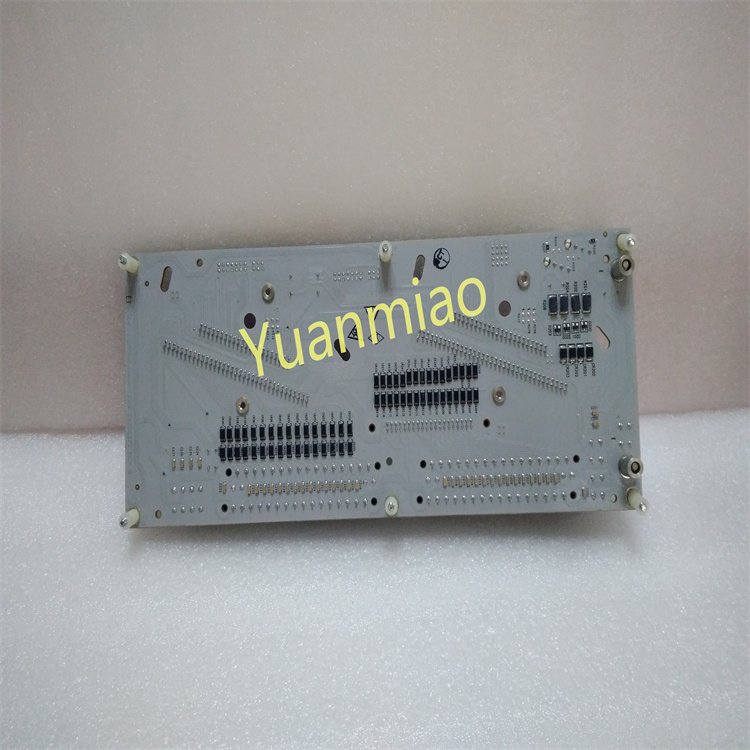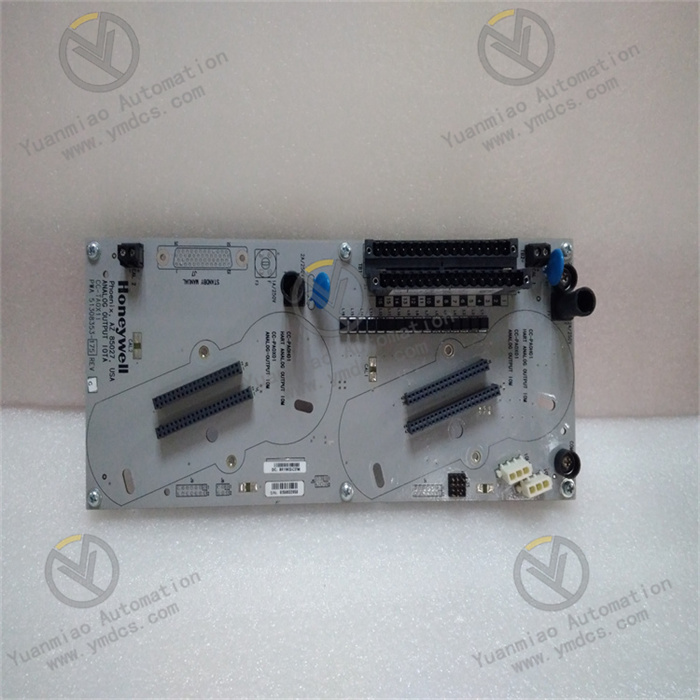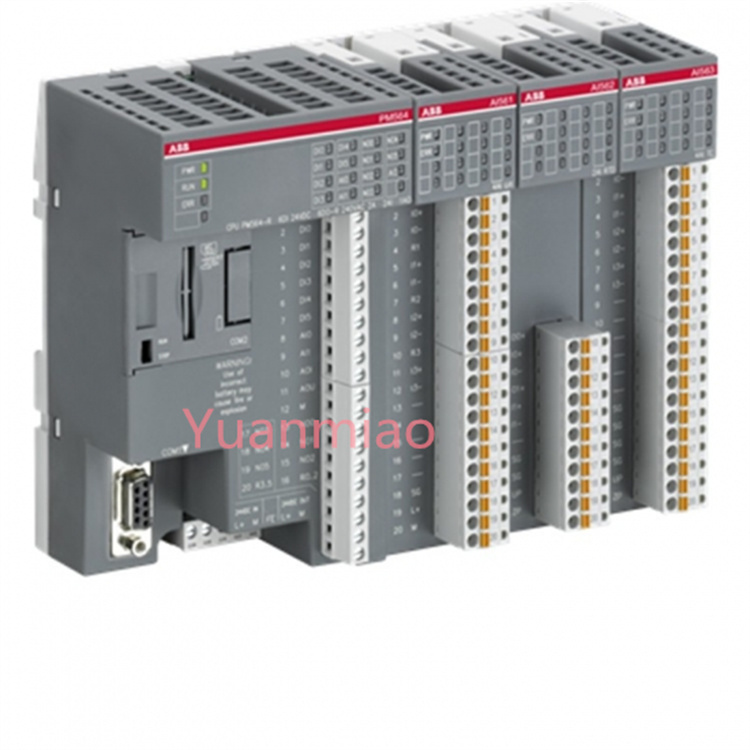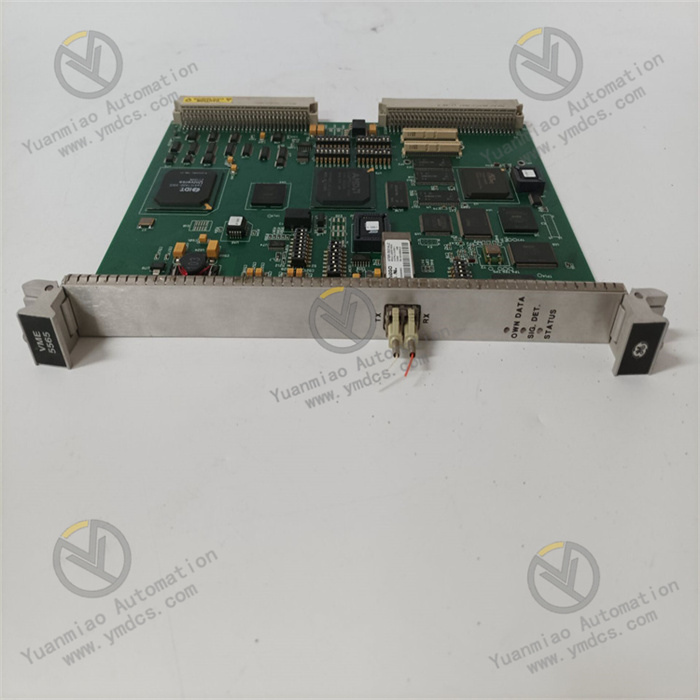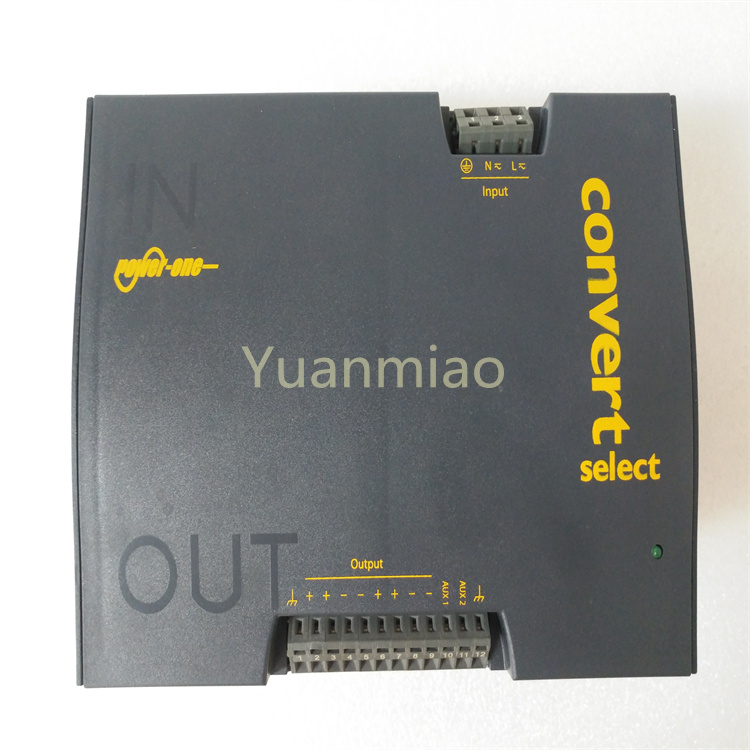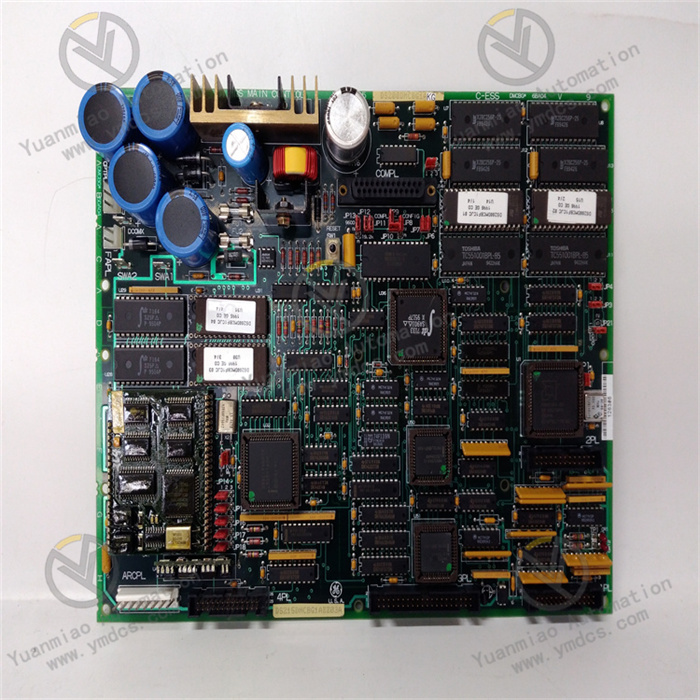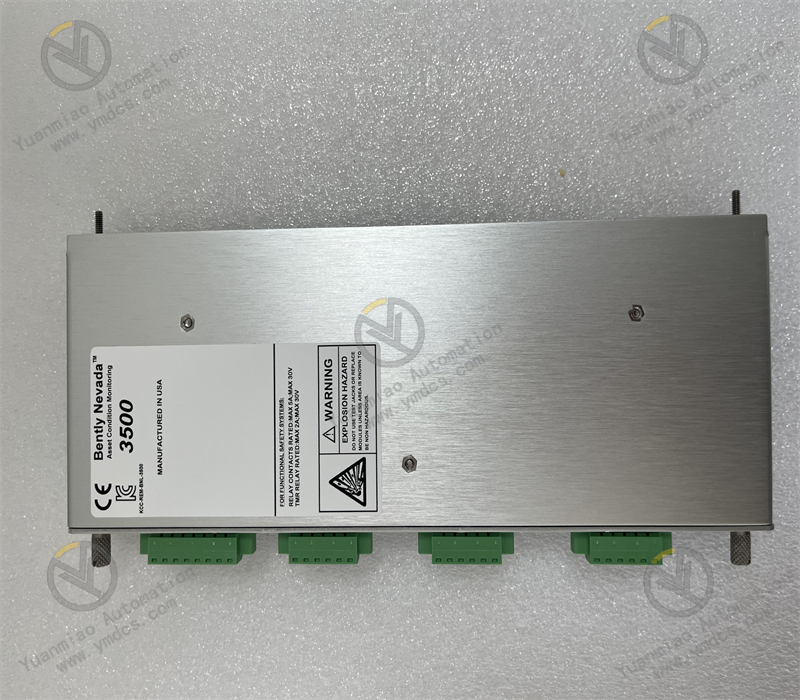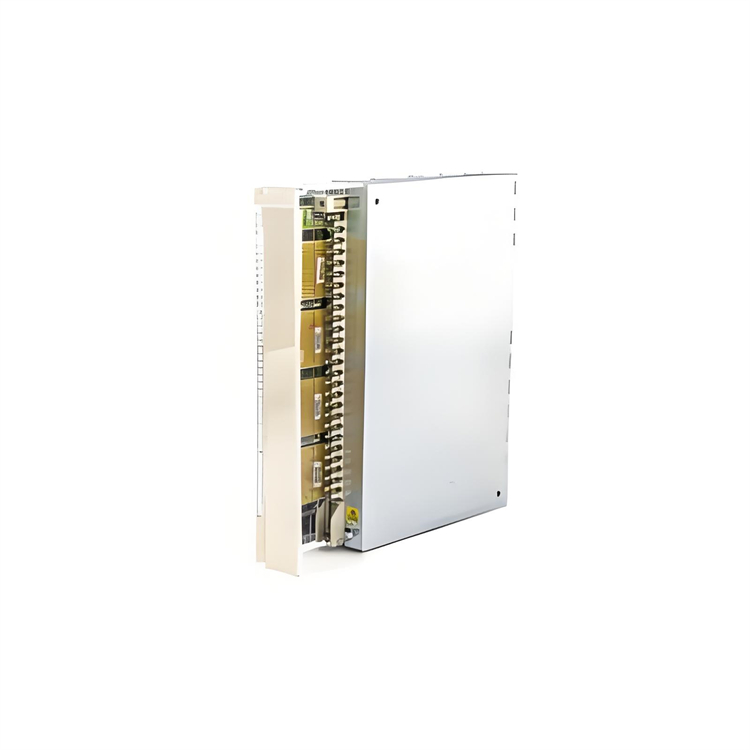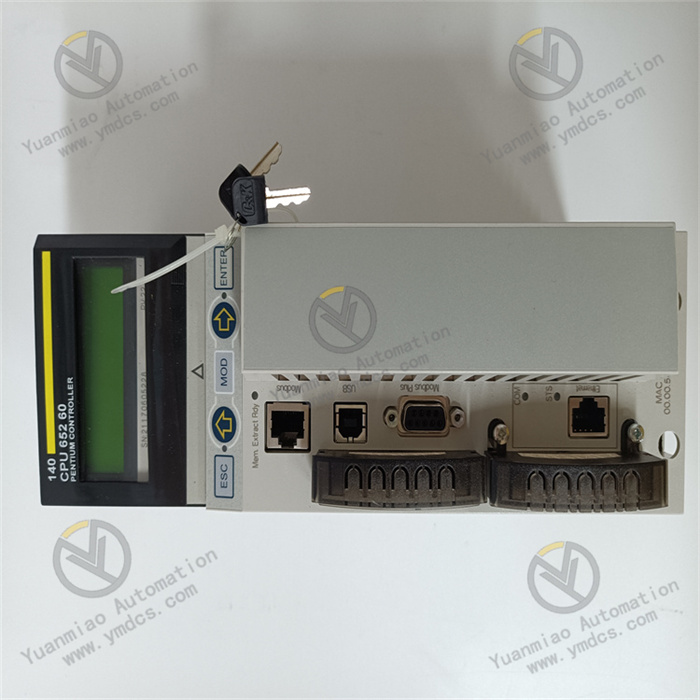Description
GE WES5123-2600
I. Product Overview
This product is originally produced in the United States. Its production and manufacturing process strictly follows General Electric's stringent quality control system and advanced technological processes. Every link from the selection of raw materials to the inspection of finished products is pursued with excellence, ensuring that the product has excellent quality and high reliability. In the context of global trade, it can be conveniently shipped to all parts of the world through major domestic ports such as Shanghai, Tianjin, and Guangzhou, timely meeting the needs of industrial enterprises in different regions for high-quality automated control equipment and contributing to the development of global industrial automation.
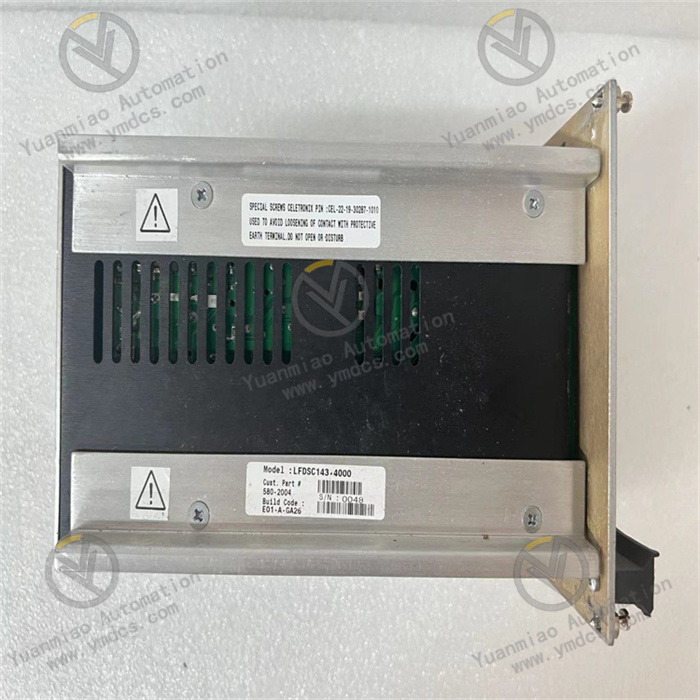
II. Technical Parameters
Interface Type:
Equipped with an Ethernet interface, which supports high-speed data transmission and can realize fast and stable data interaction with servers, upper computers, and other control devices in the industrial Ethernet. Through the Ethernet interface, GE WES5123-2600 can upload the collected industrial on-site data in real-time and receive control commands from the upper computer at the same time, realizing remote monitoring and centralized management, which greatly improves the informatization and intelligent level of the industrial automation system.
It is equipped with an RS-485 serial communication interface, which has strong anti-interference ability and long transmission distance, and is suitable for scenarios in industrial fields that require high communication stability. It can connect multiple industrial instruments, sensors, actuators, and other devices to build a distributed control network, realizing centralized data collection and decentralized control, ensuring stable communication in complex industrial electromagnetic environments.
Communication Protocol: Supports multiple mainstream industrial communication protocols such as Modbus and EtherNet/IP. The compatibility of the Modbus protocol enables it to seamlessly connect with a large number of industrial devices that meet the standard, facilitating system integration and expansion; the EtherNet/IP protocol is based on Ethernet technology, providing strong support for high-speed data transmission and information sharing between devices, allowing GE WES5123-2600 to easily integrate into various complex industrial network architectures and meet the communication needs of different industrial automation systems.
(2) Data Processing Performance
Processor Performance: Equipped with a high-performance industrial-grade processor, it has strong data computing and processing capabilities. It can quickly process a large amount of analog and digital data from various sensors and devices, conduct real-time analysis and calculation of the data, and generate corresponding control signals according to the preset control algorithms. Whether it is simple logic control or complex closed-loop control, the processor can respond quickly to ensure the timeliness and accuracy of control, meeting the strict requirements for real-time performance in the industrial production process.
Processor Performance: Equipped with a high-performance industrial-grade processor, it has strong data computing and processing capabilities. It can quickly process a large amount of analog and digital data from various sensors and devices, conduct real-time analysis and calculation of the data, and generate corresponding control signals according to the preset control algorithms. Whether it is simple logic control or complex closed-loop control, the processor can respond quickly to ensure the timeliness and accuracy of control, meeting the strict requirements for real-time performance in the industrial production process.
Storage Capacity: Has a certain capacity of memory and flash memory. The memory is used to temporarily store data and programs during operation, ensuring the smoothness of the device when processing multiple tasks; the flash memory is used to store important contents such as device configuration information, control programs, and historical data, and the data will not be lost when the device is powered off, ensuring that the device can quickly return to normal working status after restarting, and also providing data support for subsequent data analysis and fault tracing.
(3) Input and Output Characteristics
Analog Input and Output:
There are a large number of analog input channels, which can be connected to various analog sensors such as temperature, pressure, flow, and liquid level. They can accurately collect continuously changing signals in the industrial field and convert them into digital signals for the processor to process. The analog input has high precision, usually with small errors, which can meet the needs of high-precision monitoring of various parameters in industrial production and provide a reliable data basis for precise control.
Analog Input and Output:
There are a large number of analog input channels, which can be connected to various analog sensors such as temperature, pressure, flow, and liquid level. They can accurately collect continuously changing signals in the industrial field and convert them into digital signals for the processor to process. The analog input has high precision, usually with small errors, which can meet the needs of high-precision monitoring of various parameters in industrial production and provide a reliable data basis for precise control.
The analog output channel can output standard analog signals (such as 4-20mA current signals or 0-10V voltage signals) for controlling actuators that require continuous adjustment, such as control valves and frequency converters. By outputting accurate analog signals, continuous and smooth control of industrial process parameters can be achieved, ensuring the stability of the production process and the consistency of product quality.
Digital Input and Output:
The digital input interface can receive switching signals from buttons, travel switches, proximity switches, and other devices, which are used to monitor information such as the operating status and action position of the equipment. These signals have a fast response speed, which can timely reflect the status changes of on-site equipment and provide a quick basis for the logical judgment of the system.
The digital input interface can receive switching signals from buttons, travel switches, proximity switches, and other devices, which are used to monitor information such as the operating status and action position of the equipment. These signals have a fast response speed, which can timely reflect the status changes of on-site equipment and provide a quick basis for the logical judgment of the system.
The digital output interface can drive relays, contactors, and other devices to realize start-stop control and logic control of motors, solenoid valves, and other equipment. The digital output has a high load capacity, which can meet the control needs of different types of actuators and ensure the effective execution of control commands.
(4) Environmental Adaptability
Operating Temperature Range: Can work stably in a wide temperature range of -25℃ to 70℃. This enables GE WES5123-2600 to adapt to various harsh temperature environments such as industrial plants in cold regions and high-temperature production workshops, ensuring normal operation under extreme temperature conditions without being affected by excessive or too low temperatures.
Operating Temperature Range: Can work stably in a wide temperature range of -25℃ to 70℃. This enables GE WES5123-2600 to adapt to various harsh temperature environments such as industrial plants in cold regions and high-temperature production workshops, ensuring normal operation under extreme temperature conditions without being affected by excessive or too low temperatures.
Relative Humidity: Can work reliably in a relative humidity environment of 5% - 95% (non-condensing). In a humid environment, the internal circuits and components of the device will not have faults such as short circuits and corrosion due to moisture; in a dry environment, it can also effectively prevent damage to the device caused by static electricity, ensuring the long-term stable operation of the device in different humidity environments.
Protection Level: The protection level reaches IP65 and above, which can effectively prevent the intrusion of dust and the spray of low-pressure water. It is suitable for industrial on-site environments with more dust and possible water splashes, such as food processing workshops and metallurgical workshops, which greatly improves the service life and reliability of the device in harsh environments.
(5) Power Supply Requirements
Adopts DC power supply mode, with a common power supply voltage of 24V DC, and has a wide voltage adaptation range, which can work normally within a certain range of voltage fluctuations. At the same time, the device also has overvoltage and overcurrent protection functions. When the power supply voltage or current is abnormal, it can automatically take protective measures to avoid damage to the device due to power supply problems, improving the safety and reliability of the device.
Adopts DC power supply mode, with a common power supply voltage of 24V DC, and has a wide voltage adaptation range, which can work normally within a certain range of voltage fluctuations. At the same time, the device also has overvoltage and overcurrent protection functions. When the power supply voltage or current is abnormal, it can automatically take protective measures to avoid damage to the device due to power supply problems, improving the safety and reliability of the device.
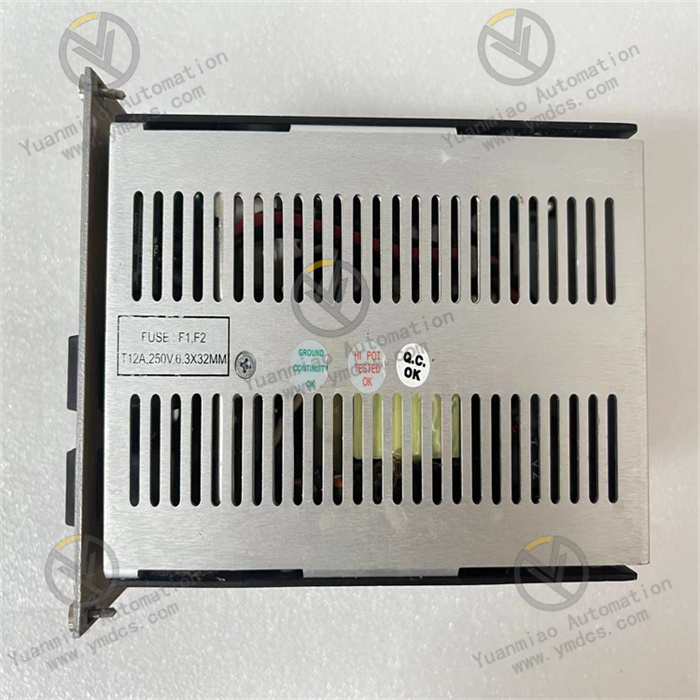
III. Functional Characteristics
GE WES5123-2600 adopts industrial-grade components and advanced circuit design, with strong anti-electromagnetic interference ability. In industrial sites with a large number of strong electromagnetic interference sources such as motors and frequency converters, the device can effectively resist external interference, ensure the accuracy of data transmission and the reliability of control commands, reduce misoperations and fault shutdowns caused by interference, and ensure the continuous and stable operation of the industrial automation system.
(2) Flexible Programming Function
Supports multiple industrial programming languages, such as ladder diagram (LD), function block diagram (FBD), structured text (ST), etc. Users can choose the appropriate programming language for program design according to their own programming habits and control needs. At the same time, it is equipped with special programming software, which has a user-friendly interface and convenient operation, providing a rich library of instructions and functional modules, facilitating users to quickly write, debug and modify control programs, and flexibly realize various complex control logics to meet the personalized control needs of different industrial scenarios.
Supports multiple industrial programming languages, such as ladder diagram (LD), function block diagram (FBD), structured text (ST), etc. Users can choose the appropriate programming language for program design according to their own programming habits and control needs. At the same time, it is equipped with special programming software, which has a user-friendly interface and convenient operation, providing a rich library of instructions and functional modules, facilitating users to quickly write, debug and modify control programs, and flexibly realize various complex control logics to meet the personalized control needs of different industrial scenarios.
(3) Perfect Self-Diagnosis and Alarm Function
Has a strong self-diagnosis function, which can monitor the operating status of the device in real-time, such as processor operation, memory usage, communication interface status, power supply status, etc. When the device fails or is abnormal, it can detect it in time and send out alarm signals through indicator lights, displays, or communication networks, and record fault information (such as fault type, occurrence time, etc.) at the same time. This enables maintenance personnel to quickly find the fault location, judge the cause of the fault, and take targeted measures for maintenance, shortening the fault elimination time and improving the maintainability of the device.
Has a strong self-diagnosis function, which can monitor the operating status of the device in real-time, such as processor operation, memory usage, communication interface status, power supply status, etc. When the device fails or is abnormal, it can detect it in time and send out alarm signals through indicator lights, displays, or communication networks, and record fault information (such as fault type, occurrence time, etc.) at the same time. This enables maintenance personnel to quickly find the fault location, judge the cause of the fault, and take targeted measures for maintenance, shortening the fault elimination time and improving the maintainability of the device.
(4) Easy Integration and Expansion
The design of GE WES5123-2600 fully considers the integration and expandability of the system. It can seamlessly connect with other series of GE products (such as I/O modules, human-machine interfaces, etc.) and also integrate well with compatible devices of other brands. At the same time, the device supports function expansion by adding I/O modules, etc. Users can flexibly expand the number of input and output points and functions according to the expansion of production scale or the increase of control needs, without large-scale transformation of the entire control system, reducing the cost and difficulty of system upgrading.
The design of GE WES5123-2600 fully considers the integration and expandability of the system. It can seamlessly connect with other series of GE products (such as I/O modules, human-machine interfaces, etc.) and also integrate well with compatible devices of other brands. At the same time, the device supports function expansion by adding I/O modules, etc. Users can flexibly expand the number of input and output points and functions according to the expansion of production scale or the increase of control needs, without large-scale transformation of the entire control system, reducing the cost and difficulty of system upgrading.


